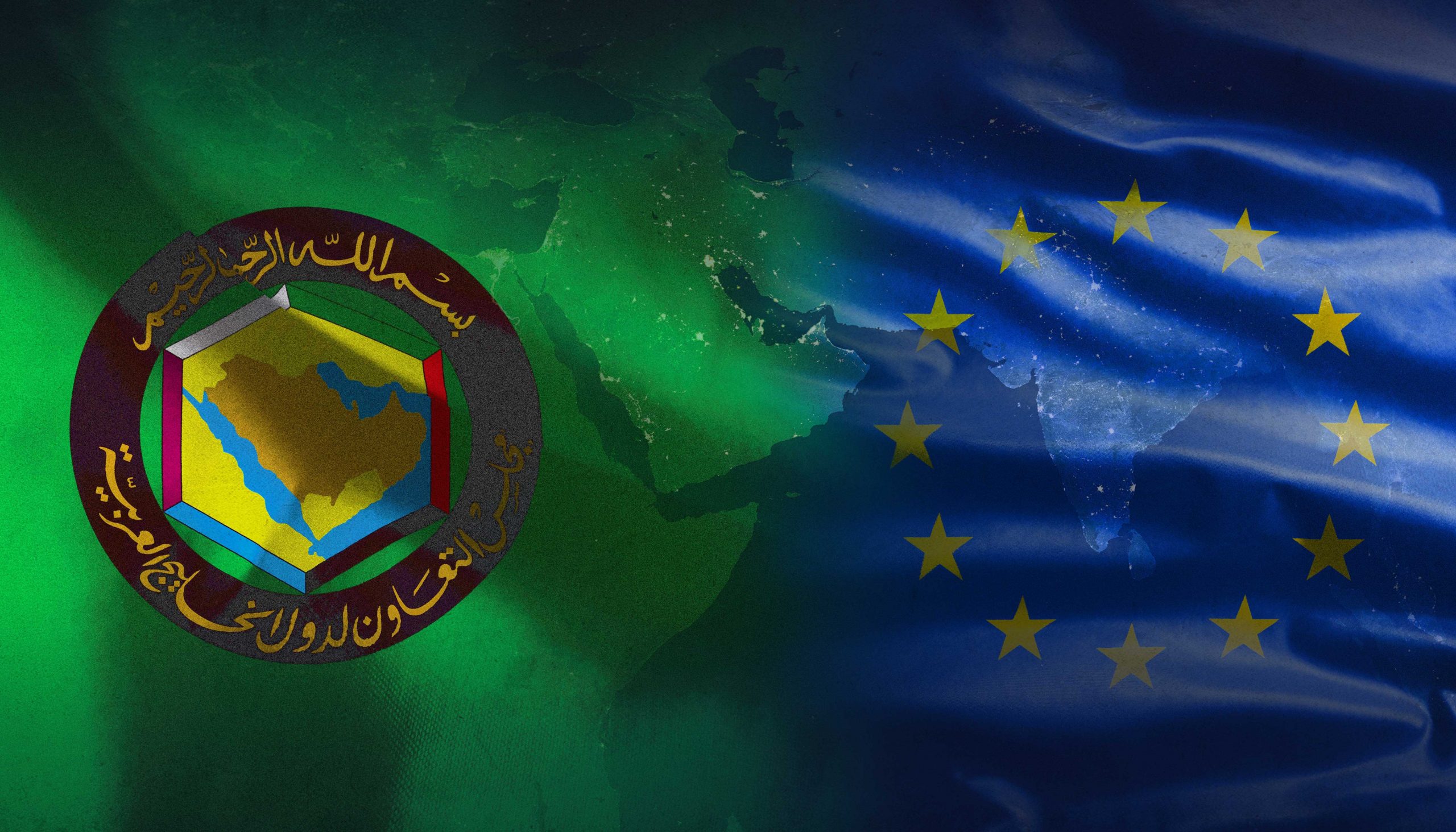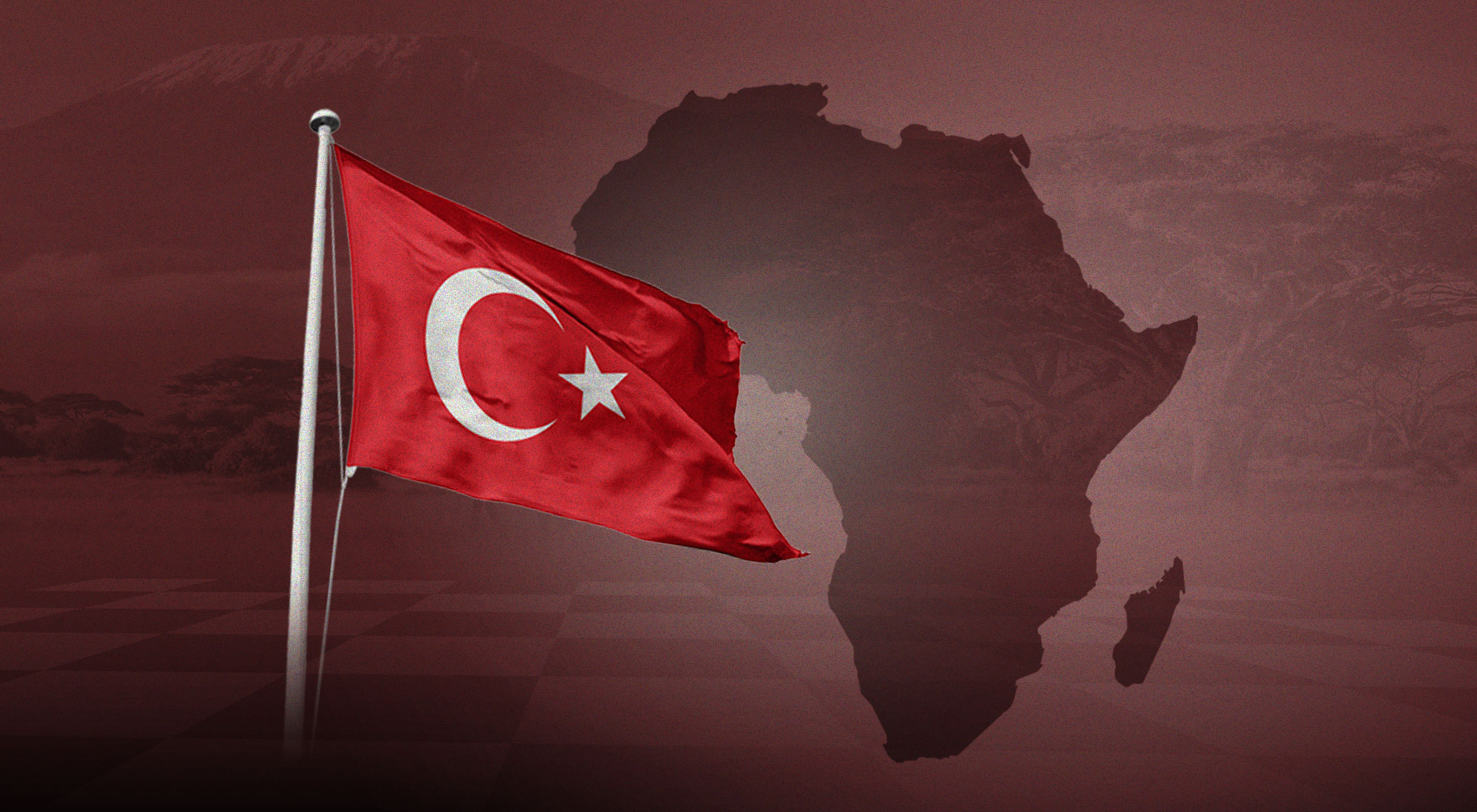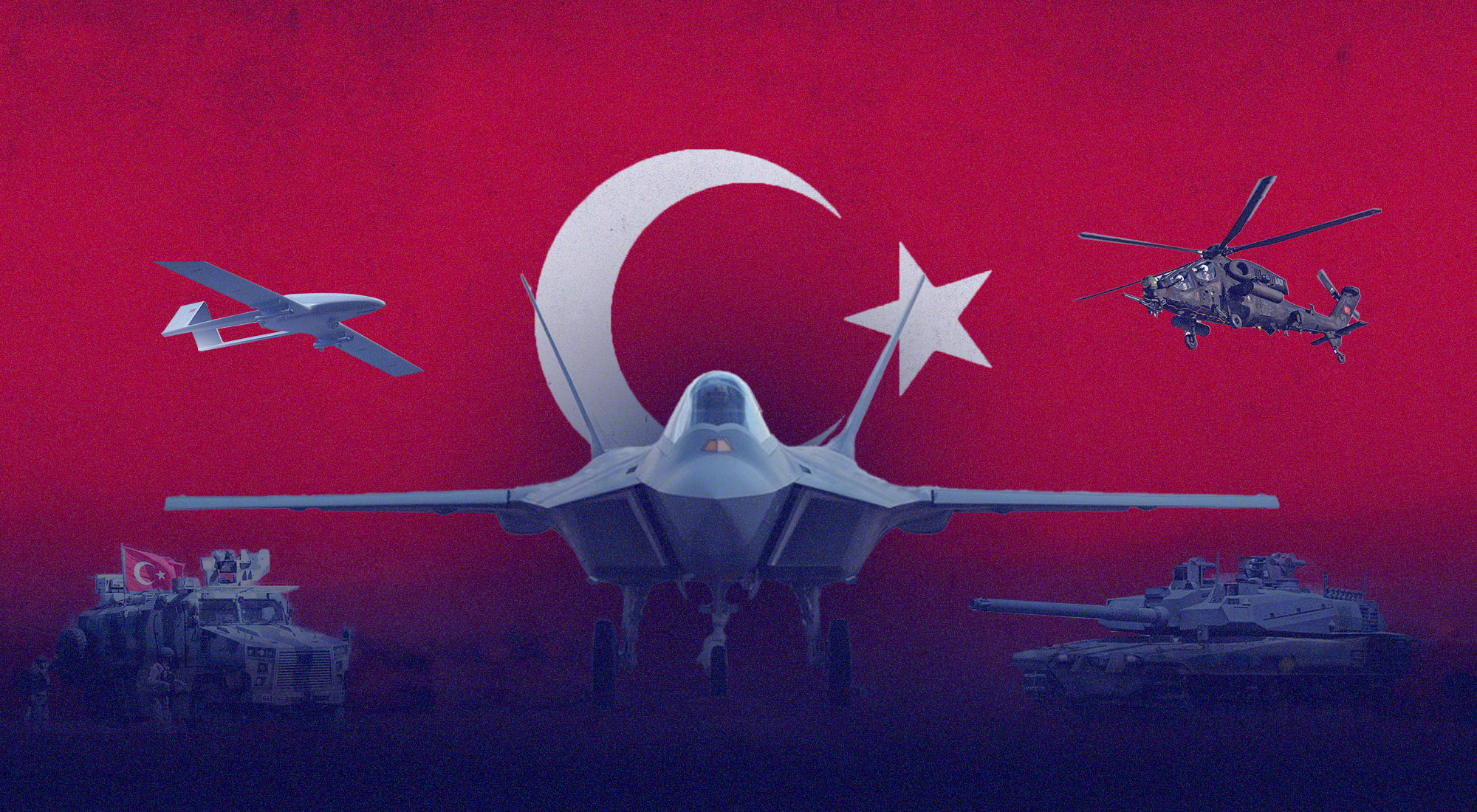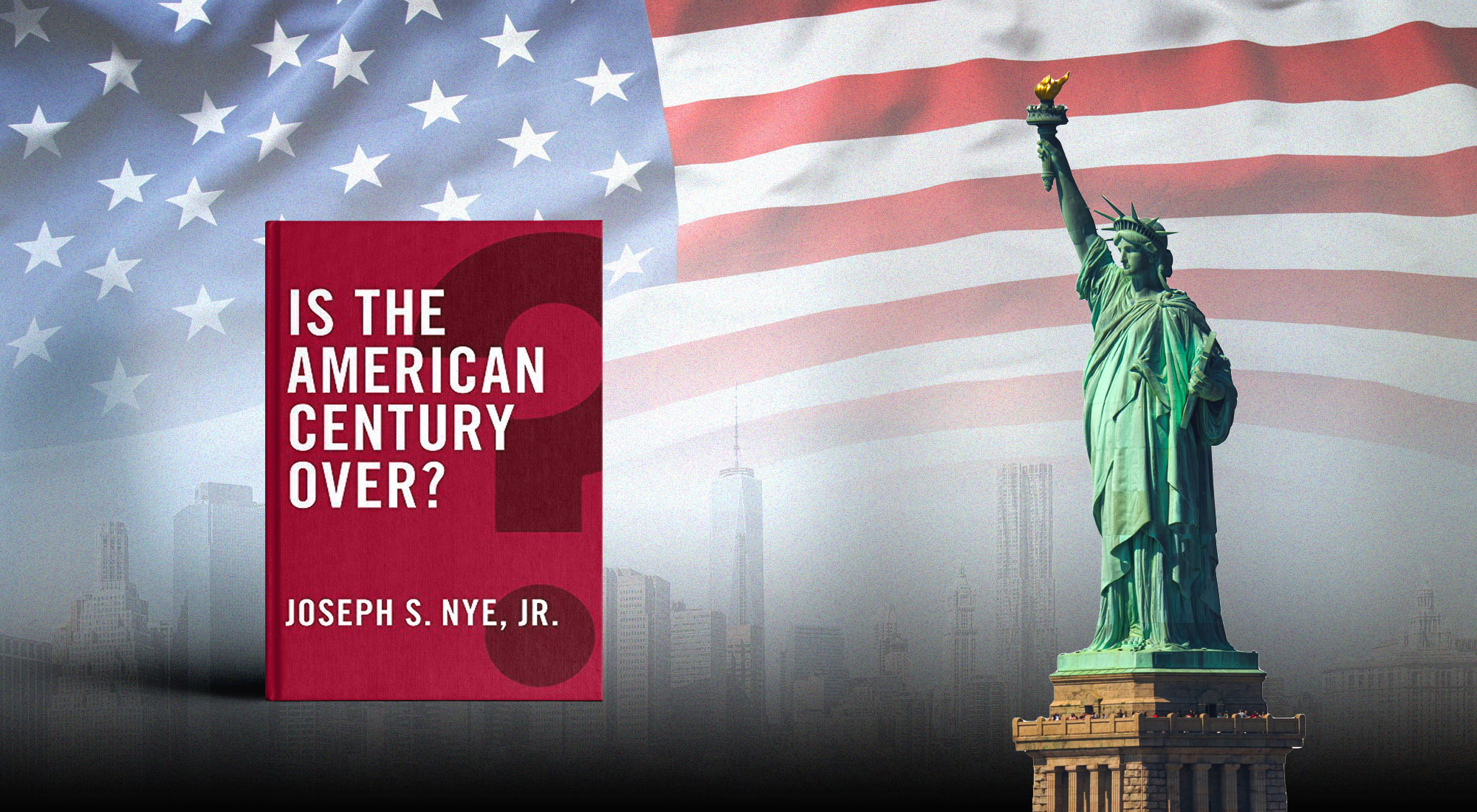Regional organizations are major actors in maritime security. They allow member states to pool resources, expertise, and assets to safeguard their territorial waters and Exclusive Economic Zones, while also making concerted efforts to ensure global maritime security governance. Given the importance of regional organizations, the question of how they cooperate and work together is a vital, but often ignored, component of maritime security governance.
The European Union (EU) and the Gulf Cooperation Council (GCC) are major regional organizations in this regard. As a global trade and shipping power, the EU has the self-declared goal of being a “global maritime security provider”[1] and runs several maritime operations, capacity-building, and information-sharing initiatives. Historically, the GCC countries have been severely affected by maritime insecurities, including Somalia-based piracy and armed attacks on merchant shipping in their strategic sea lanes. Like the EU, they have proactively contributed to maritime security operations, capacity-building, and information-sharing for more than two decades.
This analysis investigates the maritime security relations between the EU and the GCC with a focus on how they provide security in the Western Indian Ocean. For both organizations, the region is a strategic waterway, with the Strait of Hormuz, the Bab al-Mandab Strait, and the Suez Canal being vital chokepoints for global trade, energy, and digital communications. What initiatives do the two organizations have in place to secure these strategic waters, and how closely are they aligned?
The objective of this insight is to offer recommendations on how the ties between the two organizations could be further strengthened. The analysis begins with a short discussion of the status of regional organizations in maritime security, providing further support for the argument that they are vital players in global maritime security governance. After a brief review of the maritime security challenges in the Western Indian Ocean, this analysis discusses the fuzzy and complex patchwork of the region’s maritime security governance initiatives. It then offers a brief discussion of how Europe and the Gulf states have shaped this emerging regional patchwork. The discussion concludes with a set of recommendations on how the EU and GCC could strengthen the regional maritime order by following a more agile patchwork governance approach.
Regional organizations in global maritime security
Like other fields of international security, maritime security is often debated and analyzed from a state-centric viewpoint. This is understandable given that foreign and security policies are the prerogative of states, maritime security often is equated with sea power concerns and the need for balancing and hedging against naval hegemons, and international laws of the sea, including the UN Convention on the Law of the Sea, lay out the rights and duties of states to govern the seas while only encouraging them to strengthen regional cooperation.
While states are indeed major actors in maritime security, an exclusive state focus neglects the depth of global and regional economic interdependence, the transnational scope of the majority of maritime security threats, and the fact that many states have evolved their relations into thickening ‘security communities’, in which non-violent dispute resolution is the norm, states share common threat perceptions, agree upon joint projects and initiatives, and often surrender substantial shares of their sovereignty.[2] NATO and the EU are often seen as primary examples in this regard, but similar observations have been made for Southeast Asia, Africa, and the Mediterranean region.[3]
Although conflicts between states over territory, resources, and influence are one of the domains of maritime security—and militarized disputes between states occur even within a security community[4]—the majority of issues under the maritime security agenda are transnational in nature.[5] The complex global web of interdependence created by contemporary supply chains, energy markets, and transport and communications industries means that maritime disruptions can have cascading global effects. Legally, key maritime insecurities, such as terrorism, piracy, or narcotic trafficking, are treated under international law, and all states have the right to intervene and are encouraged to cooperate.[6]
On a global level, this is reflected in a strong international consensus that maritime security requires international cooperation, as was recently witnessed in a May 2025 UN Security Council high-level debate.[7] In that debate, more than 80 states stressed the need for further collaboration, capacity building, information sharing, and ongoing attention to issues such as terrorism, piracy, smuggling, and illicit fishing. The UN and its diverse agencies are vital in advancing the international rules and regulations for maritime security and in providing technical assistance and capacity building in situations where no one else can provide them. Yet, regional organizations are a crucial component of maritime security not only because many maritime security issues manifest in regional hot spots but also because responses benefit from pooling resources, expertise, and assets.[8]
The EU and GCC
Arguably, the EU has pursued its maritime security integration the furthest so far. This is reflective of the fact that the Common Fisheries Policy is one of the oldest areas of integration, the EU has historically had a strong role in regulating maritime transport (in light of major oil spills off European waters), and maritime security operations have played a vital role in strengthening the European Security and Defence Policy, with the first joint European naval operation launched in 2008.[9] Today, the EU has three maritime agencies (for fisheries, shipping, and coast guard functions), runs four ongoing maritime security operations, and has become a major donor in maritime security capacity building, particularly on the African continent.[10] The declared goal of being a global maritime security provider is also reflected in the second iteration of a dedicated maritime security strategy.[11] The EU has strong references to maritime security in its overall security strategies and global ocean governance policies, which are supported through tailored offices in the Commission and the European External Action Service. The EU also increasingly represents the maritime security interests of its member states in international forums and at a bilateral level.
The GCC has developed a significant maritime security profile over the decades, despite receiving less scholarly attention and articulating its ambitions more subtly. Its maritime security policies have evolved around several key institutional developments, most notably the Peninsula Shield Force (PSF), established in 1984 as the organization’s military wing. A significant milestone emerged with the adoption of the first comprehensive Vision for Regional Security in December 2023, which declared “the security of GCC states is indivisible” and explicitly addressed maritime security challenges.[12] The 2024 Riyadh Memorandum of Understanding on Port State Control has added further momentum to cooperation.[13]
Institutional capacity has been progressively strengthened through the GCC Unified Maritime Operations Center and the establishment of a unified military command in December 2013, designed to create integrated defense capabilities alongside an intelligence-sharing pact signed in 2004 and comprehensive joint defense planning mechanisms.[14] Operational capabilities include a military communication network for early warning systems, complemented by specialized, task-focused cooperation initiatives targeting Red Sea security challenges.[15]
While at times these initiatives have struggled to gain traction due to the difficult relations with the GCC neighbors, the war in Yemen, as well as the divergent qualities of the relationship with the United States, the 2023 security vision and subsequent documents indicate a growing momentum for drawing on the benefits of closer cooperation in the maritime security domain.
The ascending importance of regional organizations such as the EU and GCC elevates a critical question in contemporary maritime security governance: how can these organizations strengthen their relations to enhance synergies while preventing redundancy and duplication of efforts? This challenge becomes particularly acute given that most regional seas operate within complex, multi-layered governance architectures where jurisdictions and mandates frequently overlap.[16] The Western Indian Ocean exemplifies this complexity and merits closer examination as a case study in navigating such intricate maritime security arrangements.
Maritime Security in the Western Indian Ocean
The Western Indian Ocean has emerged as a comprehensive geographical term encompassing the Red Sea, the Arabian Gulf, and the extensive maritime expanse stretching from South Africa northward to Sri Lanka. This region has become synonymous with complex maritime security challenges that have evolved significantly over the past decades.
While Somali-based piracy dominated security concerns until 2014, subsequent years witnessed a broadening recognition of diverse threats confronting both regional states and the international shipping industry.[17] The security landscape transformed to encompass narcotics trafficking—particularly Afghan-sourced heroin—irregular migration flows generating complex search and rescue situations, weapons smuggling, contraband trafficking, violations of UN maritime sanctions, and fisheries-related crimes involving both regional and international actors.
These challenges intensified throughout the late 2010s as the Yemen conflict increasingly spilled into maritime domains, while Iran-attributed attacks on commercial shipping as part of the Iran-Israel shadow war further destabilized regional waters. The security focus shifted dramatically to the Red Sea in 2023 when Houthi rebels escalated attacks against merchant vessels linked to Israel, as well as the UK and the U.S. Contemporary concerns have expanded to include threats against underwater infrastructure and the proliferation of substandard shipping practices that pose significant environmental risks. Moreover, climate-induced and environmental maritime security risks, such as rising sea levels, extreme weather, and habitat loss, are on the horizon.
A nascent maritime security architecture
This multifaceted threat environment has catalyzed the development of a complex maritime security architecture comprising maritime security operations, governance forums, and sophisticated information-sharing networks. These purpose-built security responses complement a foundation of earlier maritime governance institutions that primarily address environmental protection and resource management concerns.
From a historical perspective, three regional seas conventions established since the 1980s provide the foundational framework for maritime cooperation,[18] though they are rarely recognized as dedicated security instruments. The Kuwait Convention (1972) governing the Gulf, the Jeddah Convention (1982) covering the Red Sea and Gulf of Aden, and the Nairobi Convention (1985) focusing on East African waters constitute legally binding frameworks that address maritime emergencies, pollution control, and environmental protection. Operating within UNEP’s Regional Seas Programme, these agreements incorporate provisions facilitating close collaboration between maritime security agencies, establishing the institutional groundwork for contemporary regional cooperation.
Perceived as primarily environmental in orientation and constrained by limited effectiveness,[19] these foundational conventions were largely bypassed when acute maritime security challenges started to emerge in the late 1990s. Instead, dedicated multilateral security institutions were developed. These were predominantly structured around informal frameworks rather than legally binding treaties.
The resulting constellation of cooperative maritime security mechanisms encompasses[20] the U.S.-UK-led Combined Maritime Forces (2002), the Shared Awareness and Deconfliction Mechanism (SHADE) initiated by the EU, NATO and the United States (2008), the Contact Group on Piracy off the Coast of Somalia (2008), the Djibouti Code of Conduct facilitated by the International Maritime Organization (2009), the Indian Ocean Commission’s Regional Maritime Security Architecture (2013), the Red Sea Council led by Saudi Arabia (2020), and, with a wider regional focus, the Indian Ocean Naval Symposium (2008).[21]
While the Combined Maritime Forces (CMF) originated as a counter-terrorism initiative and the Indian Ocean Naval Symposium (IONS) emerged to provide a naval dialogue forum for Indian Ocean Rim Association members, most of these institutions were conceived and constructed as direct responses to the Somali piracy crisis of 2008-2012, subsequently broadening their operational scope as awareness for regional security challenges evolved.
The scope, focus, and membership vary widely. The CMF is a 46-nation partnership, primarily a navy-to-navy cooperation with significant international participation. SHADE is a regular forum of navies active in the region and also comprises participants from the maritime transport industry. The Djibouti Code of Conduct (DCoC) is an Eastern Africa and Gulf states cooperation focused on maritime transport authorities with 20 signatories. The IOC’s Regional Maritime Security Architecture (RMSA) is a smaller island-centered operational cooperation encompassing coast guard and navy collaboration. As the only treaty-based maritime security cooperation, it has seven Eastern African members. The Red Sea Council (RSC) is the newest addition to the architecture and is comprised of eight littoral states that border either the Red Sea or the Gulf of Aden. Each of these mechanisms provides information-sharing functions, and dedicated centers are operated by the RMSA and CMF. The picture gains complexity with several multilateral naval operations active across the region, which also provide additional information sharing.[22]
Regional complexity and dysfunctionalities
This institutional proliferation has created a dense thicket of overlapping mandates, generating risks of duplication, interface conflicts, and systemic dysfunctionalities that undermine maritime security effectiveness.
Concrete examples illustrate these coordination challenges. States participating simultaneously in both DCoC and RMSA faced conflicting obligations and contentious debates over information-sharing structures. While a Memorandum of Understanding was negotiated to address these tensions, it only partially resolved the underlying institutional competition. Similarly, both the Combined Maritime Forces and the DCoC developed parallel capacity-building coordination mechanisms, creating potential duplication. The DCoC and the Red Sea Council have overlapping membership and mandates with an unclear working relationship.
The Contact Group on Piracy off the Coast of Somalia (CGPCS) exemplifies institutional dysfunction. Originally the central diplomatic coordination forum for maritime security in the region, the CGPCS was first expanded beyond its piracy mandate and given a new name (Contact Group for Illicit Maritime Activities), but then became dormant as its relationship with other processes grew overly complex. Meanwhile, multiple institutions—including the Nairobi Convention, the DCoC, SHADE, and the Indian Ocean Commission—each claim authority to develop overarching regional strategies and coordinate other actors. Rather than fostering collaboration, these competing claims risk intensifying institutional rivalry and fragmented regional responses.
These dysfunctionalities underscore the urgent need for institutional calibration and enhanced patchwork governance approaches to prevent the proliferation of maritime security institutions from becoming counterproductive to their intended security objectives.
The EU’s and the GCC’s contribution to the regional maritime security order
Both the EU and the GCC are major players in this institutional thicket. The GCC is part of the region, and its member states participate proactively in most mechanisms, including as members of the DCoC, the CMF, and SHADE. Saudi Arabia has made substantial donations to the DCoC and hosted several meetings, while Bahrain hosts the CMF headquarters. GCC states have consistently commanded one of the several task forces of the CMF, with Task Force 152 focused on the Gulf continuously under GCC leadership. All GCC states, moreover, have in recent decades made significant direct and indirect contributions to capacity-building efforts in the region.
The EU, through its member state France, which administers the overseas territories of Réunion and Mayotte, is directly involved in the Indian Ocean Commission and has been the main donor for the RMSA since its initiation. The EU has observer status at the DCoC and has consistently provided donations and capacity-building support through this framework. Through its operation EUNAVFOR Atalanta, operative in the region since 2008, the EU has had a significant role in controlling piracy in the region, but also acts as one of the co-hosts of SHADE, ensuring navy-to-navy and industry coordination. With its Maritime Security Center—Indian Ocean and the development of the Indian Ocean Regional Information Sharing platform, the EU also provides important information-sharing services.
In the Red Sea, the EU and GCC states have jointly developed the Red Sea Council as a new regional maritime security institution. The EU, moreover, has funded since 2021 the Regional Programme for Maritime Security in the Red Sea Area, designed to build capacity and support these efforts. In summary, the EU and the GCC are deeply entangled in the region, their investments and initiatives and how well they work together have a major impact on the region.
Navigating the patchwork together
While these contributions are substantial to strengthening the regional maritime order, the EU and GCC should adopt a joint adaptive patchwork governance approach that treats current complexity and fragmentation as a given but aims to leverage its inherent diversity and flexibility.
First, this implies embracing the distributed nature of authority, recognizing that each existing institutional mechanism has strategic value, while working toward creating flexible coordination networks. Rather than attempting to impose a single regional strategy with uniform standards, maintaining awareness of ongoing activities, establishing common frameworks for information sharing, and promoting mutual recognition are key. The existing EU-GCC maritime security dialogue could serve as the first layer to ensure transparency about ongoing and planned initiatives.
However, currently, the only forum in the region that brings most players together is SHADE.[23] As major contributors and organizers of SHADE, the EU and GCC should ensure that this forum becomes more inclusive, guaranteeing that all initiatives and institutions are represented, including RMSA, DCoC, the Red Sea Council, and the Regional Seas mechanisms. This would require going significantly beyond the current military focus but would be necessary to strengthen SHADE as a strategic dialogue platform for the region. Yet, it is equally important that SHADE successfully maintain and strengthen its character as an emergency management network that coordinates during crisis moments.
Second, greater emphasis must be placed on policy learning systems to formalize knowledge transfer across institutions and initiatives. By creating mechanisms for systematic evaluation and sharing of different approaches, patchwork governance becomes a systematic learning engine. Professional associations, networks, and research institutions can facilitate this knowledge circulation. Building and funding a think tank network for maritime security in the region and developing joint curricula for professional education, training, and capacity building could foster mutual learning and exchange of promising practices.[24] Such measures could also enable the integration of emerging challenges, such as in critical maritime infrastructure protection or disaster relief, more quickly and effectively into ongoing processes.
Third, the region will benefit from applying subsidiarity principles to strategically allocate authority to the most appropriate level for each function. Since regional sea environments have different marine activities and vulnerabilities, some issues benefit from local variation and responsiveness, while others require broader coordination. Smart patchwork governance matches the scale of authority to the nature of each challenge. This requires replacing political preferences with strategic analysis of which challenges are best addressed at which scale and layer. For instance, which challenges are best addressed by the more encompassing DCoC versus the narrower Red Sea Council, or when does RMSA represent a more suitable mechanism than the CMF? A coordinated strategic investment approach by the EU and GCC could significantly enhance regional order in this regard.
Fourth, in adaptive patchwork governance, flexible standards with local implementation allow for both coordination and customization. Shared and legally binding frameworks can establish minimum standards or common goals—for instance, for information sharing and maritime domain awareness—while permitting diverse approaches to achieving them. Maritime security standards that set different targets and allow different compliance pathways could be productive in this regard. Evaluating how the Regional Seas Conventions, which offer legally binding agreements, could be better used for security purposes represents a productive way forward to ensure basic levels of accountability and move beyond the current predominant focus on informal, rather than legally binding, cooperation.[25]
These approaches recognize that a hierarchically organized regional order and uniformity are not always optimal and that well-managed diversity and complexity can outperform centralized control in a dynamic maritime security environment. Both the EU and GCC have a rich internal history of managing patchwork governance and should bring this experience to the wider Western Indian Ocean region.
Conclusion
This study has demonstrated that the EU and GCC, as major regional maritime security actors, operate within a complex and fragmented institutional landscape in the Western Indian Ocean. While both organizations have made substantial contributions to regional maritime security through their participation in mechanisms like the CMF, the DCoC, and SHADE, the proliferation of overlapping institutions has created coordination challenges and potential inefficiencies that undermine collective security objectives.
The key finding is that rather than pursuing institutional consolidation or hierarchical reorganization, the EU and GCC should embrace adaptive patchwork governance that leverages the existing diversity of mechanisms while enhancing coordination through strategic dialogue, systematic policy learning, principled subsidiarity, and flexible standards with local implementation. This approach recognizes that well-managed complexity can outperform centralized control in addressing the dynamic and multifaceted nature of maritime security challenges.
Looking forward, the success of EU-GCC maritime cooperation will depend on their ability to transform the current institutional thicket into a more coherent but flexible security architecture. As new challenges emerge—from critical maritime infrastructure protection to climate-induced security risks—their joint leadership in developing adaptive governance mechanisms will be crucial not only for regional stability but also as a model for maritime security cooperation in other strategic waterways globally. The Western Indian Ocean thus represents both a testing ground and a potential template for how regional organizations can effectively collaborate in an increasingly complex maritime security environment.
[1] Christian Bueger and Tim Edmunds, “The European Union’s Quest to Become a Global Maritime Security Provider,” Naval War College Review 76, no. 2 (2023): article 6.
[2] Emanuel Adler, “The Spread of Security Communities: Communities of Practice, Self-Restraint, and NATO’s Post-Cold War Transformation,” European Journal of International Relations 14, no. 2 (2008): 195-230; Emanuel Adler and Patricia Greve, “When Security Community Meets Balance of Power: Overlapping Regional Mechanisms of Security Governance,” Review of International Studies 35, no. S1 (2009): 59-84.
[3] Alan Collins, “Bringing Communities Back: Security Communities and the Association of Southeast Asian Nations’ Plural Turn,” Cooperation and Conflict 49, no. 2 (2014): 276-291; Laurie Nathan, “The African Union and Regional Organisations in Africa: Communities of Insecurity,” African Security Review 19, no. 2 (2010): 106-113. Christian Bueger, “Communities of Security Practice at Work? The Emerging African Maritime Security Regime,” African Security 6, no. 3-4 (2013): 297-316; Andrea Prah, “Ad-hoc Security Initiatives in Africa: A New Type of Security Community?” Journal of International Peacekeeping 26, no. 4: 313-329.
[4] Gunther Hellmann and Benjamin Herborth, “Fishing in the Mild West: Democratic Peace and Militarised Interstate Disputes in the Transatlantic Community,” Review of International Studies 34, no. 3 (2008): 481-506.
[5] Christian Bueger and Timothy Edmunds, Understanding Maritime Security (Oxford & New York: Oxford University Press, 2024).
[6] Natalie Klein, Maritime Security and the Law of the Sea (Oxford: Oxford University Press, 2011).
[7] United Nations, “‘Without Maritime Security, There Can Be No Global Security’, Secretary-General Tells Security Council, Calling on Greater Respect for International Law,” May 20, 2025, https://press.un.org/en/2025/sc16065.doc.htm.
[8] Christian Bueger, Timothy Edmunds, and Jutta Stockbruegger, “Securing the Seas: A Comprehensive Assessment of Global Maritime Security,” United Nations Institute for Disarmament Research (UNIDIR), November 2024, https://unidir.org/wp-content/uploads/2024/11/Securing_the_seas_web-1.pdf.
[9] Christian Bueger and Vonintsoa Raffaly, “The European Union and Global Ocean Politics,” in Handbook of European Union Governance, ed. Sonia Lucarelli and James C. Sperling (2025), 527-539; Marianne Riddervold, The Maritime Turn in EU Foreign and Security Policies: Aims, Actors and Mechanisms of Integration (Cham: Palgrave Macmillan, 2018).
[10] Christian Bueger and Tim Edmunds, “The European Union’s Quest to Become a Global Maritime Security Provider,” Naval War College Review 76, no. 2 (2023): article 6.
[11] Council of the European Union, Council conclusions on the Revised EU Maritime Security Strategy(EUMSS) and its Action Plan, Document 14280/23, Brussels, European Union, 2023.
[12] Jean-Loup Samaan, “The GCC’s Joint Security Vision: Reading Between the Lines,” Gulf International Forum, May 10, 2024, https://gulfif.org/the-gccs-joint-security-vision-reading-between-the-lines/.
[13] Gerasimos Rodotheatos, and Vasiliki Alexandra Politi, “The Riyadh MoU on Port State Control and Environmental Security in the GCC Region: State Commitment and Legal Gaps,“ Journal of Territorial and Maritime Studies 12 (2), pp. 80–10 (2025).
[14] Brahim Saidy, “The Gulf Cooperation Council’s Unified Military Command,” Foreign Policy Research Institute, October 2014, https://www.fpri.org/article/2014/10/the-gulf-cooperation-councils-unified-military-command/.
[15] Eleonora Ardemagni, “The GCC States’ Security Policies in the Red Sea Geopolitical Border: Factors and Policy Options,” Luiss Mediterranean Platform, January 2025, https://mp.luiss.it/archives/the-gcc-states-security-policies-in-the-red-sea-geopolitical-border-factors-and-policy-options/.
[16] Christian Bueger, Elizabeth Mendenhall, and Rebecca Strating, “Introduction: Understanding Global Ocean Regions,” in The Politics of Global Ocean Regions, ed. Christian Bueger, Elizabeth Mendenhall, and Rebecca Strating (London: Palgrave Macmillan, 2025), 1-31.
[17] Timothy Edmunds, “Beyond Piracy? Maritime Security in the Western Indian Ocean,” TRENDS Research & Advisory, 2023, https://trendsresearch.org/insight/beyond-piracy-maritime-security-in-the-western-indian-ocean/. Leonardo Jacopo Maria Mazzucco, “Gulf Maritime Security: Seeking Stability in the Era of Precarious Détente,” TRENDS Research & Advisory, October 4, 2022, https://trendsresearch.org/insight/gulf-maritime-security-seeking-stability-in-the-era-of-precarious-detente/. Christian Bueger and Jan Stockbruegger, “Maritime Security and the Western Indian Ocean’s Militarisation Dilemma,” African Security Review 31, no. 2 (2022): 195-210.
[18] Nilüfer Oral, “Forty Years of the UNEP Regional Seas Programme: From Past to Future,” in Research Handbook on International Marine Environmental Law, ed. Rosemary Rayfuse (Cheltenham: Edward Elgar, 2015), 351-359.
[19] Elizabeth Mendenhall, “The Limits of Marine Regionalism in Global Ocean Governance: The UNEP Regional Seas Programme,” in The Politics of Global Ocean Regions, ed. Christian Bueger, Elizabeth Mendenhall, and Rebecca Strating (Cham: Palgrave Macmillan, 2025)
[20] Christian Bueger, “Who Secures the Western Indian Ocean? The Need for Strategic Dialogue,” Center for Maritime Strategy, September 19, 2024, https://centerformaritimestrategy.org/publications/who-secures-the-western-indian-ocean-the-need-for-strategic-dialogue/, and Pascaline Alexandre, “From Fragmentation to Framework: The Evolution of Regional Maritime Governance in the Western Indian Ocean,” Center for International Maritime Security (CIMSEC), June 20, 2025, https://cimsec.org/from-fragmentation-to-framework-the-evolution-of-regional-maritime-governance-in-the-western-indian-ocean/ .
[21] These are the main maritime security mechanisms, yet there are several others, including initiatives by the African Union, the Southern African Development Community, the Intergovernmental Authority for Development, the Indian Ocean Rim Association, and the UN Office on Drugs and Crime’s Global Maritime Security Programme.
[22] Including the EU’s operation EUNAVFOR Atalanta and Aspides, the EU member state led European-led Maritime Awareness in the Strait of Hormuz (EMASOH) and its operation AGÉNOR, the US led International Maritime Security Construct and Operation Prosperity Guardian.
[23] See Christian Bueger, “Who Secures the Western Indian Ocean? The Need for Strategic Dialogue,” Center for Maritime Strategy, September 19, 2024, https://centerformaritimestrategy.org/publications/who-secures-the-western-indian-ocean-the-need-for-strategic-dialogue/.
[24] Most countries in the region already have think tanks that focus on maritime security in one way or the other. In addition to regional heavyweights, such as India’s Observer Research Foundation and National Maritime Foundation, Pakistan’s National Institute for Maritime Affairs, or the UAE’s TRENDS Research & Advisory, this includes even small island states, as exemplified by the work of the Charles Telfair Centre (Mauritius), James R. Mancham Peace and Diplomacy Research Institute (Seychelles) or the Centre for Security and Strategic Studies (Maldives), for instance. A role model could be, for instance, the development of the Western Indian Ocean Marine Science Association.
[25] See the recommendations in Christian Bueger, Timothy Edmunds, and Jutta Stockbruegger, “Securing the Seas: A Comprehensive Assessment of Global Maritime Security,” United Nations Institute for Disarmament Research (UNIDIR), November 2024, https://unidir.org/wp-content/uploads/2024/11/Securing_the_seas_web-1.pdf .









